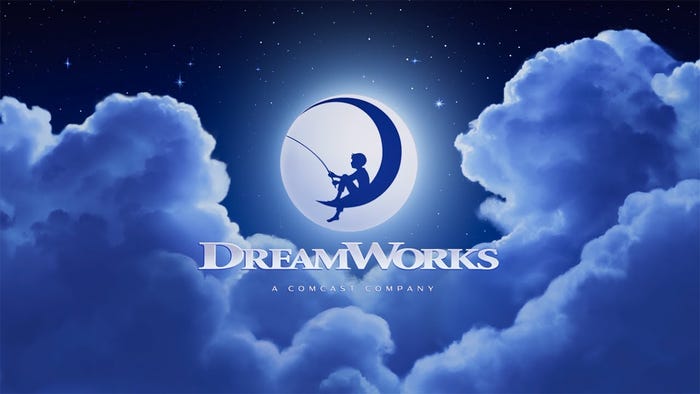Part 1, Don't show, involve
The series "Don't show, involve" builds upon the narrative as a cognitive process and how to go from a thought to the plotting of an involving experience.
#narrative #gamedev #writers #premise #plotting

Previously posted on the Narrative construction
I´m pretty sure you´ve heard the phrase, “Show, don´t tell” as a piece of advice when constructing narratives in film. The origin is said to come from the Russian writer Anton Chekhov who thought writers used too many descriptions and adjectives and should leave the interpretation to the receiver. Today the phrase works as an advising technique for screenwriters to avoid having a character knocking at a door at the same time it says: “I´m knocking on the door to see if my friend is at home”.
What is important to know when taking notes of any advice that concerns the narrative is that there is no law that says how the narrative shall be constructed. But as we have a new media today and where the expression “show, don´t tell” is about making the most out of a medium and the stylistic elements it offers from a narrative perspective the expression needs a renewal. Due to the receiver’s interpretation of the information has never been so important for a constructor to understand as today because the interactive media requires that someone is willing to interact, the narrative construction does not only need to go beyond "the telling" but also “the showing” in order to “involve” the receiver to interact.
The conflict
An example of a term that stems from the film medium that makes us show rather than involve the receiver is the conflict. Thus the creation of a conflict is an advising technique to create causes and effects between elements inside a fictive world, where two opposing objects try to win, survive or get revenge by arming, revealing or outsmarting each other, the structuring of a narrative pattern based on a conflict for a game easily lead the construction towards showing the player through descriptions rather than involving by constructing a considerable amount of information (the so-called exposition) to persuade the player to accept the conflicting circumstances instead of letting the player learn by identifying and exploring the conditions.
As a game developer thinks in terms of learning, which a filmmaker hardly does as the culture of filmmaking accommodates either an artistic belief in the right to express oneself or that learning is related to education and not entertainment, the problem with advice originating from the “show-business” is that the recognition of learning - the narrative as a cognitive process - is obscured. While the narrative doesn't care about what media we choose to structure a pattern for, the receivers do. If applying a form meant for a film on a game the “conflict” can interestingly move outside a game, which can be noticed in the debates concerning the incompatibility between the gameplay and the narrative and where the narrative has (impressively) got its own genre by representing story-driven games. But what justifies the discussions about the narrative and the gameplay as two incompatible components is that the narrative is applied to a game according to a form meant for the film. Correspondingly, the mix of forms and styles can also be seen in the filmmaking. But as we don´t expect a film to have gameplay, we hardly hear any complaints when filmmakers create a battle between two forces and you feel like you want a game controller while waiting for the hero and its forces to shoot down the enemies. What the filmmakers have missed out is to do the most out of the concept of the form in the film as they probably thought of a form of a first-person shooter game and not being aware of that a conflict in a so-called story-driven game involves so many other parts than shooting at an opponent (see also about form and style “Why there is no perfect narrative”).
The propellor and the goal
As the aim is to find a comprehensive terminology and advice that aids the understanding of the narrative construction in games in order to involve the player, a person who gave the conflict a more viable term to meet the concept of forms in a game (which filmmakers can also gain from knowing) was the game designer Tracy Fullerton in “Game design workshop” from 2008. By referring to the conflict as a propellor, Fullerton opened up for a more accessible way to understand narrative as a cognitive process and to think in terms of structuring forms for the interactive media by enabling a constructor to think about the receiver´s cognitive process and activities.

Photo by Pmillera4 - Flickr
Since a propellor signifies a process of something that is moving forward, it also depicts how our thinking works as a cognitive activity when identifying, exploring, comparing, taking decisions and making choices from the information we assimilate, even the constructors.
When Vince Gilligan propelled the process that led to the television series “Breaking Bad”, Gilligan´s propelling towards a goal started when speaking to a friend about the difficulties to finding a job (the interview is from The Guardian):
"I was talking to a friend, and neither of us was having much luck. We were joking around on the phone, and he said we should follow the example of a guy who'd put a meth lab in the back of a Winnebago and drive around the south-west. My friend said, 'Why don't we do that?' He was joking, but an image popped into my head of somebody who would do that."
Even if Gilligan´s profession and situation matter when he directed his thoughts towards a goal, the cognitive activities that started the propellor was his curiosity to explore to understand the reason for a man to put a meth lab in a van and drive out in the desert. When Gilligan´s curiosity and thoughts finally came to a goal it also became the guidance throughout the whole project when he formulated his thoughts as follows:
'This is a story about a man who transforms himself from Mr Chips into Scarface.”

Breaking Bad, AMC
The same cognitive process Gilligan had can also be seen when the game designer Jenova Chen, who created the online game “Journey” (produced by Thatgamecompany), described his process when his thoughts were propelled towards a goal while playing the online game World of Warcraft (the interview can be found at Gamasutra):
“I'm a kind of nerdy guy who doesn't like to leave the house,” he admitted, but he still wanted to have some social interaction. He tried to do this in WoW, but all the online chatter was about the game - nobody paid attention to each other. “The more I played this game, the more I encountered other players, the more I realized I was lonely,” he said.”
In the same way as Gilligan, Chen´s directing of his thoughts towards a goal was expressed as follows:
”… were aiming for a feeling of awe, of catharsis, in an online world.”

Journey, Thatgamecompany, Sony Computer Entertainment
If looking at Gilligan´s and Chen´s respective thoughts, their cognitive processes are very similar to how something gets their attention and waking their curiosity and how they formulate a goal. What´s interesting however is how they direct their thoughts rather immediately towards two different media, which can be seen by comparing Gilligan´s “showing” of a character´s conflicting transformation with Chen´s “involving” of a receiver´s feeling:
Gilligan: 'This is a story about a man who transforms himself from Mr Chips into Scarface.”
Chen: ”… were aiming for a feeling of awe, of catharsis, in an online world.”
The premise
The guidance Gilligan and Chen created that followed them throughout the projects we call a premise. A premise is the constructor´s key-document and can be anything from a thought, as we´ve seen, to a more elaborated description that directs the structuring of the form towards the desired outcome. The problem though that occurs if thinking in terms of a conflict, “the showing”, is that the setting of a premise for gameplay, as to involve, easily gets separated from the setting of a premise based on a dramatic arc that stems from a film.
If we imagine that we are making a game and sitting with a premise that is aimed for a screen like the one Gilligan expressed: 'This is a story about a man who transforms himself from Mr Chips into Scarface.” the first question would be how we get the player to understand what it means to be Mr Chips as to know how to become Scarface and how to make the player drive out in the desert to make meth? The trickiest question though is how to make this playable in order to create gameplay without putting the words in the player´s mouth? If being in this situation as a constructor I would also start blaming the narrative for giving me a headache unless I added Chen´s approach to the premise by thinking in terms of involving the receivers´ interpretation and emotions by propelling the cognitive activities to make the player identify, explore, compare, making choices and decisions.
Even if Gilligan doesn´t mention the feeling he would like the receiver to experience, the curiosity Gilligan creates by letting the receiver follow an ordinary family guy who teaches chemistry to enter the criminal world after being diagnosed with cancer and likes to solve the financial problems for the family if he dies, reminds about Gilligan´s own initial curiosity. But what Gilligan communicates when structuring his thoughts towards a goal is a feeling of fear and insecurity the character feels to be experienced by the receivers. So let's say we should propel Gilligan´s premise towards a form of a game and follow Chen´s involvement of an emotion, the feeling of insecurity and fear would undoubtedly serve as an opening to propel the thinking from the receiver´s perspective to learn by identifying and exploring the conditions and its consequences.
If we look at Chen´s premise, the interesting is that he, compared to Gilligan, came to structure the narrative as a cognitive pattern later in the process as he started off with a premise based on an emotion he liked to create. In this way, Chen had no information from the beginning that could propel the player´s cognitive activities and emotions. What he did was to add a structured pattern that is called the Hero´s Journey, which is an advising concept that stems even from "the telling" of myths and the structuring of a dramatic arc. Since Chen generously shares his experiences from making the game, I warmly recommend reading about his work from the perspective of making two different forms become one. Thus the narrative has captured its own genre to be story-driven according to the patterns that represent “the showing” Journey never achieved any credits for the narrative. Instead, it got awarded from managing to merge the narrative, gameplay and the mechanics to become one (1) form that created an overall effect on the involvement.
If we imagine that we put Gilligan in one department and Chen in another to work on a project and where Gilligan is asked to write a premise for a story, and Chen makes a premise for the gameplay, that is very much how the game industry organizes the narrative in relation to the gameplay today. If you look at the advertisements, which is a very interesting way to find out how the narrative is understood within the game industry, and a company likes to find a person to evangelize the narrative through the leads it´s basically Gilligan´s department that likes to communicate its premise to Chen´s department to ensure that the narrative is mirrored through all the leads (audio, graphics, etc.). But as we previously could see how Gilligan´s and Chen´s cognitive processes were very similar by how they got an idea, which they propelled towards a goal - except that they were targeting different media - what would happen if they targeted the same medium? If an organization is thinking in terms of the narrative as a form stemming from the film, it´s often up to the individuals in the company to make ends meet (unless they want to challenge a reorganization of the company) regarding two forms reaching unity. But for many constructors, it´s just to hope that the “conflicting forms” doesn´t appear in the debates where the narrative once again gets the blame of being incompatible with the gameplay, which in turn could spread like a wildfire through the company, teams and if unlucky land on an individual that tried to make the two premises to become one.
So if we can learn something from Gilligan´s and Chen´s processes to find a way to create a goal and a premise that can aid the propelling of the parts to create one (1) form it would be something like this:
'This is a story about a man who transforms himself from Mr Chips into Scarface.” +
”… were aiming for a feeling of awe, of catharsis, in an online world.”
But as we like to target one (1) medium where the receiver´s interpretation is a part of the overall form and where the narrative can assist the propelling of the receiver´s cognitive activities and emotions a formula for a premise that would make us avoid stepping into "the telling" or "the showing" and focus on "involving" could look like this:
“An identified subject(s) and a condition(s) that puts propellors on a process in relation to what the receiver should experience or feel”.
If giving the formula for an involving premise a try by creating a premise for “Breaking Bad” (as that is the reality for the most constructors) and where the narrative pattern of a “conflict” is changed into a propellor where all the parts come to form an involving experience for a game, it could look like the following:
“This is a game where the player will feel the insecurity of being a family guy who doesn´t see any other way of earning money than going down a criminal path. At the same time, the fear of being exposed by the family, friends, and colleagues would be an immediate problem.”
In "Part 2, Don´t show, involve" we will follow (hands-on) Chen´s plotting of "Journey" with the help of "Narrative bridging", which is a thought based method that aids the process of going from a thought to plotting. Until then I encourage you to read everything you can find where constructors share their thoughts in order to see how they propel the thoughts towards a goal and their formulations of a premise.
Katarina Gyllenbäck, Narrative constructor
Photo by Pmillera4 - Flickr
Read more about:
BlogsAbout the Author(s)
You May Also Like













